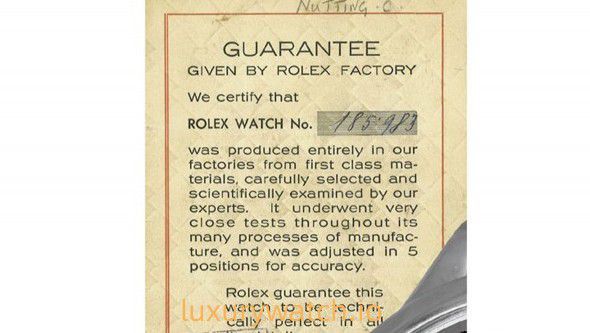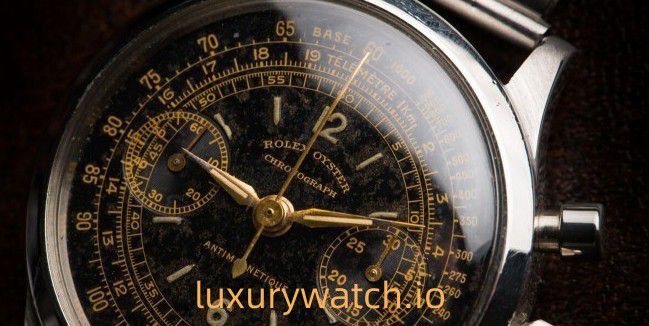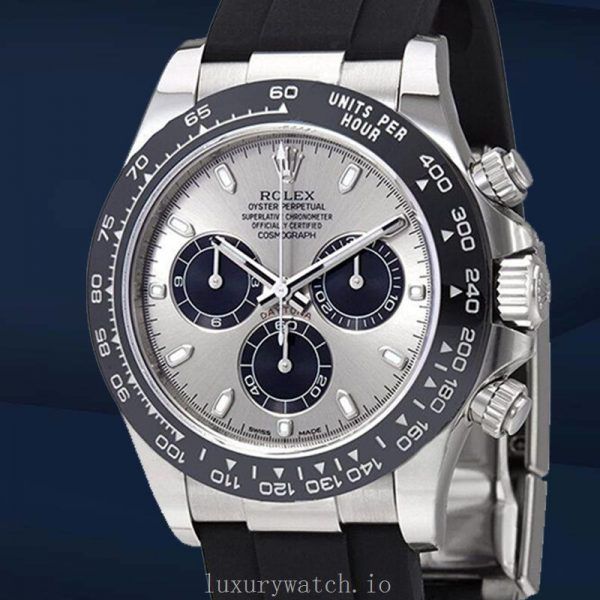Luxury Replica Watches
Rolex Ref.3525 World War Ii Chronograph, Imitation Rolex
Many Rolex antique watches are full of historical flavor and humanistic value, and they have been the target of collection by many people. After years of precipitation and time baptism, we understand that period through an antique watch. I was recently amazed by an antique Rolex watch. Rolex Ref. 3525, known as the Prisoner of War watch, was born during World War II and was used to time the “Victory Escape” in 1943. So I can’t help but feel excited. What wartime stories has this Rolex Ref. 3525 experienced?

During World War II, RAF pilots were captured and sent to prison camps, with all their watches confiscated. On May 28, 1940, a British corporal named Clive Nutting was arrested and imprisoned in the Third Concentration Camp (the Third Concentration Camp was made into a Hollywood movie, “The Great Escape” after the war) and also lost his life. I bought the Rolex watch I wore before. He was incarcerated there throughout World War II and worked as a shoemaker. Imitation Rolex.
Hans Wilsdorf, the founder of Rolex, heard about the confiscation of watches from prisoners of war and expressed his willingness to contribute to the battle by providing watches to prisoners of war camp officers. Pay was required at the end of the war. But at that time, supplying watches to these British prisoners of battle was hazardous. However, Rolex also has its considerations in doing so. They also want to test the performance of their watches in some unique environments.
For this reason, the British officers detained in prisoner-of-war camps sent letters to Hans Wilsdorf to order watches. On March 10, 1943, Clive Nutting called this Ref. 3525 Oyster chronograph from Rolex. When Rolex received this order, the person in charge thought they might be unable to deliver the watch to the customer in time, not only because of the war but also because many military officers had already reserved it.

Three months later, Clive Nutting finally received the Rolex Ref. 3525 Oyster Chronograph he had ordered before, with an invoice attached. The invoice was written in the handwriting of Rolex founder Hans Wilsdorf: “Now this watch sells for 250 francs in Switzerland, but in wartime you did not need to pay this fee.”

Clive Nutting also had his plans for ordering this watch. He was preparing for his great escape. An accurate clock was essential to him because he needed to use this watch to calculate the patrols of the correctional officers. Timetable and time to travel through the escape tunnel. Unfortunately, correctional officers eventually discovered him during his escape, and the escape tunnel was closed. An exhausting escape failed.
After the Second World War, Clive Nutting was released from prison. But he still missed the Rolex in his hand, so after returning to the UK, he wrote a letter to Rolex, stating that he wanted to pay the cost of the watch and send the watch back for warranty. Finally, Clive Nutting did not forget to praise the Rolex in his hand, “It still runs strongly even in extremely cold environments.”
In the third year after the war, in 1948, Clive Nutting received an invoice for £15, 12 shillings, and 6 pence, the final price he paid for the watch. Before his death, he kept this Oyster clock, which meant a lot to him. For him, this is a dream and a fearless resistance to war.

This rare Rolex Ref. 3525 chronograph has a diameter of 35 mm and has speed and distance measurement functions. The layout of the dial is very clever, and the dials are arranged in an orderly manner. Because the hands are filled with radium material, they can be easily read even at night. Ref.3525 is equipped with Valjoux 23-column wheel movement and is one of the first Rolex chronographs fitted with an Oyster case. Replica Rolex watches.
Every antique Rolex watch has written a story. This Rolex Ref. 3525 Oyster Chronograph writes about a heroic struggle, a resistance that is still worth commemorating today.

Band Length: 17cm
Gender: Men’s
Series: Daytona
Band Color: Black
Brand: Rolex
Dial Color: Steel Dial
Model: 116519LN
Case Size: 40mm

